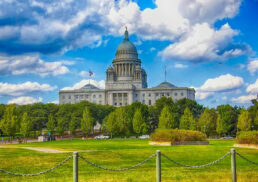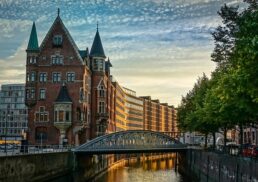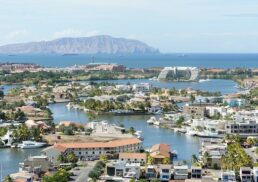The capital of Friuli Venezia Giulia is Trieste. Known for its cultural diversity and historical significance, Trieste offers a rich mix of architecture, art, and history. In this article, we will explore what makes Trieste unique, from its Roman heritage to its Austro-Hungarian influence, and highlight the key attractions you shouldn’t miss.
Table of Contents
Key Takeaways
Trieste is a cultural melting pot, showcasing the rich influences of Latin, Slavic, and Germanic traditions in its architecture, art, and history!
With a vibrant history as a Roman commercial hub and an Austro-Hungarian seaport, Trieste offers visitors a chance to explore its grandiose palaces and historic sites!
Don’t miss the delicious local cuisine and renowned coffee culture in Trieste, where traditional dishes and exquisite wines reflect the city’s diverse gastronomic heritage!
Trieste: A Unique Blend of Cultures
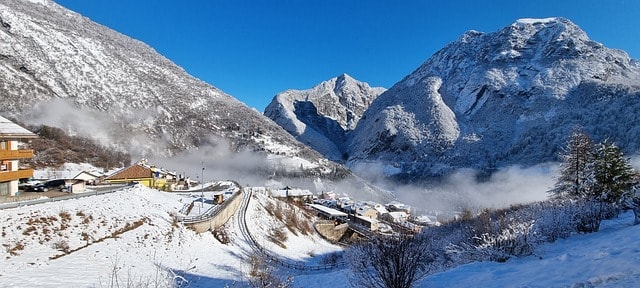
Trieste is a city like no other, where the confluence of Latin, Slavic, and Germanic cultures creates a rich and diverse tapestry. Its unique position at the crossroads of Europe has shaped its identity over the centuries, making it a melting pot of traditions, languages, and architectural styles. Walking through Trieste, one can easily spot the influence of its multicultural past, from Roman ruins to grandiose Austro-Hungarian palaces, reflecting the city’s vibrant history.
This cultural blend is not just visible in the buildings but also palpable in Trieste’s artistic and literary scenes, especially during the Yugoslav era when the city served as a cultural crossroads. This fascinating mix of influences is one of the many reasons why Trieste stands out among the historic cities of northeastern Italy. With each step, you’ll find yourself immersed in a unique cultural experience that is distinctly Triestine, yet undeniably European.
Historical Significance of Trieste
Trieste’s historical significance is woven into the very fabric of the city. During the Roman Empire, it served as a crucial commercial hub, facilitating trade and cultural exchange across the Adriatic Sea. This era left an indelible mark on the city, with remnants of Roman architecture still visible today. The Austro-Hungarian Empire further shaped Trieste, transforming it into the main seaport and a vital economic center. The reign of Maria Theresa of Austria marked the beginning of a golden age, bringing prosperity and cultural enrichment to the city.
Trieste’s history is also marked by the tumultuous events of World War II and the post-war era. The city witnessed significant battles and strategic importance, leading to its eventual status as an independent city-state under UN protection.
This rich and varied history makes Trieste a fascinating destination for anyone interested in the layers of European history and the stories they tell.
Roman Heritage
Trieste’s Roman heritage is a captivating aspect of its identity. The city houses archaeological remnants of Roman temples, including those dedicated to Zeus and Athena, providing a glimpse into its ancient past. The Roman theatre, located at the foot of the San Giusto hill and facing the sea, stands as a testament to the city’s historical significance during the Roman Empire. These sites, along with the remnants of a Roman aqueduct, showcase the engineering prowess and architectural brilliance of an ancient Roman city.
Nearby, the Basilica of Aquileia, with its extensive 4th-century mosaics, offers further insights into the region’s Roman heritage. The historic centre of Grado also reflects its Roman past, with well-preserved architecture and charming canals. Exploring these ancient sites provides a deeper understanding of Trieste’s role as a prominent Roman colony and its enduring legacy.
Austro-Hungarian Influence
The Austro-Hungarian influence on Trieste is unmistakable, particularly in its grand architecture. The city’s many palaces and public buildings stand as a testament to this era, showcasing the grandeur and elegance of Austro-Hungarian design. Walking through Trieste, one can see the legacy of this period in the intricate facades and opulent interiors that define much of the cityscape.
This influence extends beyond architecture, permeating the cultural and social fabric of Trieste. The city’s role as a major seaport during the Austro-Hungarian Empire brought economic prosperity and a cosmopolitan flair, attracting people from across Eastern Europe and beyond. This period of growth and development has left an indelible mark on Trieste, contributing to its unique character and charm.
World War II and Post-War Era
Trieste’s history during World War II and the post-war era is a poignant chapter in its story. On the evening of May 2, 1945, German forces surrendered to Yugoslav forces in Trieste, marking a significant turning point in the war. The city had seen its share of destruction, with Allied bombing raids causing significant damage and loss of life. The Risiera di San Sabba, a former rice mill, became a detention camp where thousands of Jews and partisans were tortured and killed, a dark reminder of the atrocities of the war.
After the war, Trieste was declared an independent city-state under UN protection in 1947. This period was marked by political tension and struggle between the Eastern and Western blocs, with Trieste becoming a focal point in the Cold War. The city was administered jointly by British and American forces until the withdrawal of Yugoslav troops. Miramare Castle even served as the headquarters for the US Army’s TRUST force during this time.
The Paris Peace Treaty of 1947 established the Free Territory of Trieste, further solidifying its unique status in the post-war world. Today, Trieste stands as a symbol of resilience and recovery, with its rich history serving as a reminder of the city’s strength and perseverance through challenging times.
Major Attractions in Trieste
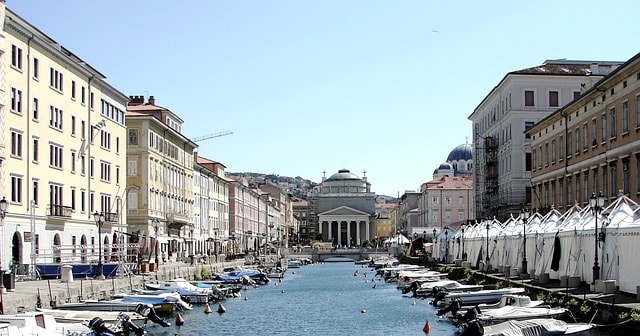
Trieste is brimming with attractions that captivate both locals and visitors alike. The city hosts the renowned Barcolana, one of the largest and most famous sailing regattas in the world, drawing sailors and spectators from across the globe. Rich cultural events and vibrant public spaces make Trieste a lively and engaging destination throughout the year.
Among the city’s must-see attractions are the iconic Piazza Unità d’Italia, the stunning Miramare Castle, and the awe-inspiring Grotta Gigante. Each of these sites offers a unique glimpse into Trieste’s history, culture, and natural beauty, making them essential stops on any itinerary.
Piazza Unità d’Italia
Piazza Unità d’Italia is a breathtaking sight and one of Trieste’s most iconic landmarks. Recognized as the largest sea-facing square in Europe, it offers expansive views of the Adriatic Sea and a stunning backdrop of elegant architecture. The square is a vibrant public space where locals and tourists gather to enjoy the beauty and history of Trieste.
The impressive buildings surrounding the square reflect the city’s rich architectural heritage, with grand facades that tell stories of Trieste’s past. Whether you’re enjoying a coffee at one of the nearby cafes or simply taking in the view, Piazza Unità d’Italia is a place that embodies the spirit and charm of Trieste.
Miramare Castle
Miramare Castle is a true gem of Trieste, offering a glimpse into the luxurious lifestyle of the Habsburgs. Built by Archduke Ferdinand Maximilian of Habsburg in the 19th century, the castle stands majestically on a promontory overlooking the Gulf of Trieste. The construction of this magnificent retreat began in 1856 and was completed in 1860, showcasing the architectural elegance of the era.
Surrounded by a lush park, Miramare Castle provides a serene escape with breathtaking views of the Adriatic Sea. The castle’s opulent interiors and beautifully landscaped gardens make it a must-visit attraction for anyone exploring Trieste.
Grotta Gigante
Grotta Gigante is a marvel of nature and a highlight for adventure seekers visiting Trieste. Celebrated as one of the largest accessible caves in the world, it offers an awe-inspiring underground experience. The cave’s remarkable features and stunning formations attract nature enthusiasts and thrill-seekers alike.
Exploring Grotta Gigante is a journey into the depths of the Earth, where you can witness the breathtaking natural beauty that lies beneath the surface. This extraordinary site is a testament to the wonders of the natural world and a must-see for anyone visiting Trieste.
Cultural Highlights
Trieste’s cultural scene is as vibrant and diverse as its history. The city’s coffee culture is legendary, with historic cafes that have served as social hubs for intellectuals and artists over the years. Trieste is also home to numerous cultural festivals that celebrate its multicultural heritage, from poetry events to traditional celebrations.
With 32 museums showcasing everything from modern art to historical artifacts, Trieste offers a wealth of cultural experiences for visitors to enjoy. Whether you’re exploring the Revoltella Museum or attending one of the city’s many festivals, there’s always something to discover in Trieste’s rich cultural landscape.
Coffee Culture
Trieste’s coffee culture is an integral part of the city’s identity. Historic cafes like Caffè San Marco have been gathering spots for intellectuals and artists for decades, offering a taste of the city’s rich cultural fabric. Illy coffee, which originated in Trieste, is a testament to the city’s dedication to quality and tradition, making it a staple in local coffee houses.
Sipping a cup of Illy coffee in one of Trieste’s historic cafes is more than just an experience; it’s a journey into the heart of the city’s cultural heritage. These cafes are not just places to enjoy a drink but are cultural landmarks that have played a significant role in shaping the social and intellectual life of Trieste.
Museums and Galleries
Trieste’s museums and galleries offer a window into its multifaceted history and artistic expression. The Revoltella Museum, a prominent art destination, showcases modern art that reflects the city’s diverse cultural heritage. With its extensive collection of contemporary and historical works, the museum provides a comprehensive look at Trieste’s artistic evolution.
Beyond the Revoltella, Trieste is home to several other notable museums and galleries that highlight its multicultural past. Visiting these institutions offers a deeper understanding of the city’s unique blend of influences and its role as a cultural crossroads in Europe.
Festivals
Trieste’s festivals are a vibrant celebration of the city’s multicultural heritage. These events highlight the diverse traditions and influences that have shaped Trieste over the centuries, from Central European to Balkan cultures. The city’s festivals often feature music, food, and cultural traditions from various communities, making them a lively and engaging experience for locals and tourists alike.
Participating in these festivals offers a unique opportunity to experience the rich cultural tapestry of Trieste first-hand. Whether you’re enjoying traditional music and dance or sampling delicious local cuisine, these events provide a window into the heart and soul of the city.
Food and Drink in Trieste
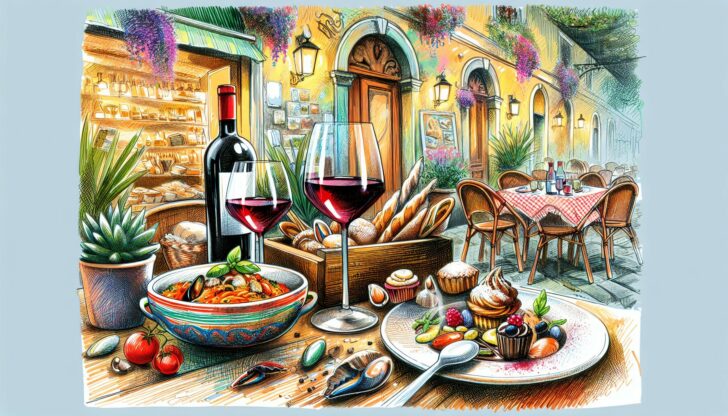
Trieste’s culinary scene is a delightful reflection of its rich cultural heritage. The city’s cuisine is a harmonious blend of Italian, Austro-Hungarian, and Slavic influences, offering a unique and flavorful dining experience. From hearty traditional dishes to exquisite local wines, Trieste’s food and drink scene promises to tantalize your taste buds and leave you craving more.
Whether you’re savoring a plate of Sardoni in savor, a traditional local dish, or enjoying a glass of fine Friulano wine, Trieste’s culinary offerings are a testament to the region’s diverse gastronomic traditions. Some of the local specialties and renowned beverages make Trieste a food lover’s paradise.
Local Specialties
Trieste’s local specialties are a true representation of the region’s unique culinary character. One of the standout dishes is Sardoni in savor, a traditional preparation of sardines that showcases the local flavors and culinary techniques. The cuisine of the Friuli Venezia Giulia region is known for its distinctive combination of sweet and savory tastes, creating a delightful and unexpected dining experience.
In addition to traditional dishes, Trieste is renowned for its high-quality wines. The region produces notable white wines such as Sauvignon and Friulano, which complement the local cuisine perfectly. Sampling these wines provides a deeper appreciation for the region’s rich viticultural heritage.
Wines and Beverages
Trieste’s vibrant wine culture is one of the city’s many charms. The Friuli Venezia Giulia region in northeast italy is known for producing some of Italy’s finest wines, particularly whites. The terroir and climate of the region contribute to the exceptional quality of these wines, making them a must-try for any wine enthusiast.
In addition to its wines, Trieste is famous for Illy coffee, a brand that originated in the city and has become synonymous with quality and rich flavor. Whether you’re enjoying a glass of local wine or sipping a cup of Illy coffee, Trieste’s beverages are sure to leave a lasting impression.
Getting Around Trieste
Navigating Trieste is a breeze, thanks to its well-connected public transportation system. The city’s local bus lines efficiently connect major areas, including popular destinations like Miramare Castle and the university. For those traveling to and from the airport, regular buses run to Ronchi dei Legionari Airport, making the journey convenient and affordable.
In addition to buses, Trieste offers a range of transportation options, including fixed-rate taxis and ferry services in the Gulf of Trieste. The city’s excellent network of cycling paths also provides an alternative way to explore the area, allowing visitors to enjoy the scenic beauty of Trieste and its surroundings. With such a comprehensive transport system, getting around Trieste is both easy and enjoyable.
Nearby Destinations
Trieste’s strategic location makes it an ideal base for exploring nearby destinations. The city boasts excellent year-round connections with European hubs, making day trips to nearby attractions a breeze. Whether you’re interested in ancient UNESCO sites, stunning mountain ranges, or beautiful lagoon beaches, the Friuli Venezia Giulia region, the regional capital, has something for everyone.
Among the must-visit destinations are the ancient city of Aquileia, the picturesque beach town of Grado, and the charming city of Udine. Each of these places offers its own unique attractions and experiences, making them perfect for a day trip or a longer stay.
Aquileia
Aquileia is a treasure trove of Roman history and a UNESCO World Heritage site since 1998. Once the ancient capital of Friuli, Aquileia was a bustling city with a peak population of around 100,000. Today, visitors can explore its impressive archaeological sites, including the Patriarchal Basilica, which features the largest early Christian mosaic in the world.
Strolling through Aquileia’s historic centre, you can almost hear the echoes of ancient times. The well-preserved ruins and exquisite mosaics offer a fascinating glimpse into the city’s storied past. Aquileia is a must-visit for history enthusiasts and anyone looking to delve deeper into the region’s Roman heritage.
Grado
Grado, often referred to as ‘Little Venice,’ is one of the most popular beach resorts in the Friuli Venezia Giulia region. Founded by Roman refugees, Grado’s historic center highlights its rich heritage with picturesque canals and Venetian-style architecture. The town’s 3 kilometers of golden sandy beaches have been awarded Blue Flag status for their cleanliness and safety, making it a perfect getaway for sun-seekers.
Exploring Grado is like stepping into a postcard, with its charming streets, inviting cafes, and beautiful waterfront. Whether you’re lounging on the beach or wandering through the historic centre, Grado offers a delightful mix of relaxation and cultural exploration.
Udine
Udine is a city rich in Venetian charm, with ancient buildings and beautiful piazzas that reflect its storied past. Piazza Libertà, considered the most beautiful Venetian square on the mainland, is a highlight of any visit to Udine. The city’s castle houses several museums, including an art gallery featuring works by renowned artists such as Tiepolo and Caravaggio.
A stroll through Udine’s city centre reveals a blend of historical and modern influences, with vibrant markets, elegant shops, and cozy cafes. Whether you’re admiring the architecture or exploring the local culture, Udine is a city that captivates and inspires.
Learn more, visit The ten most evocative places in Friuli Venezia Giulia
Summary
Trieste, with its unique blend of cultures, rich history, and stunning attractions, is a destination that promises to enchant and inspire. From the vibrant Piazza Unità d’Italia to the serene Miramare Castle, the city offers a diverse array of experiences that cater to every interest. Its culinary scene, steeped in Italian, Austro-Hungarian, and Slavic traditions, provides a delightful journey for the taste buds, while its cultural highlights offer a feast for the soul.
Exploring Trieste and its nearby destinations like Aquileia, Grado, and Udine, you’ll discover a region brimming with history, beauty, and charm. Whether you’re drawn by the ancient Roman ruins, the grand Austro-Hungarian architecture, or the vibrant cultural festivals, Trieste is a place that leaves a lasting impression. So pack your bags and get ready to uncover the many facets of this captivating city.
Frequently Asked Questions
What makes Trieste a unique travel destination?
Trieste is truly unique because it beautifully merges Latin, Slavic, and Germanic cultures, giving you a rich historical experience alongside stunning architecture! You’ll love exploring this captivating city!
What are some must-see attractions in Trieste?
You absolutely can’t miss Piazza Unità d’Italia, Miramare Castle, and Grotta Gigante—they’re gems that showcase Trieste’s stunning history and charm! Dive into these breathtaking sites for an unforgettable experience!
How can I get around Trieste?
You can easily get around Trieste using its fantastic public transportation system, which includes buses, taxis, ferries, and even cycling paths! Enjoy exploring the city without a hassle!
What are some nearby destinations worth visiting?
You won’t want to miss Aquileia for its incredible Roman heritage, charming Grado with its lovely canals and beaches, and the Venetian vibes of beautiful Udine! Each of these spots offers a unique experience just a short trip away!
What local specialties should I try in Trieste?
You absolutely must try Sardoni in savor and enjoy the fantastic local wines like Sauvignon and Friulano! Don’t forget to sip on the famous Illy coffee for a true taste of Trieste!
